December 2023
There are always things when you travel that catch your eye.
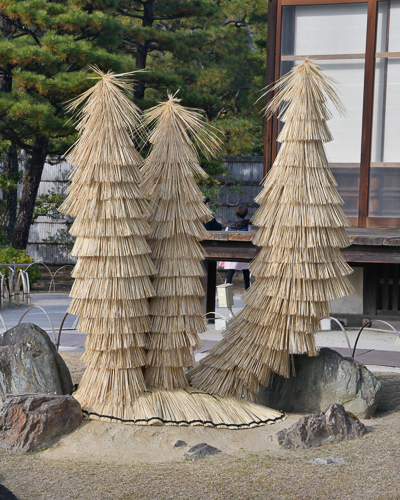
Palm trees in Nijo-jo Castle
In the garden at Nijo-jo Castle, there are sotetsu (Sago palm) trees. These trees were the offerings from a Daimyo (regional feudal lord) for the Tokugawa Shogunate in the early Edo period.
Quite obviously, they would never last the winters of Kyoto, so they are covered with sheets of rice straw called komo until the end of March.
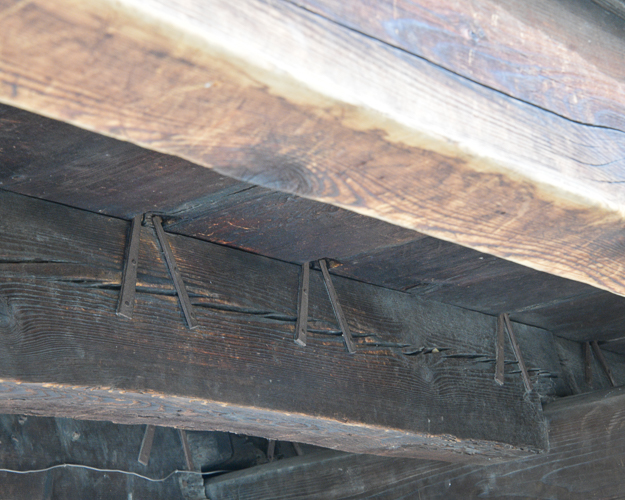
The underpinnings of the Nightengale Floor in Nijo-jo Castle.
I read about Nightengale Floors many years ago and have always been fascinated by them. I have walked on several, but this time, a guide showed me the underpinnings when I toured Nijo-jo Castle. Nijo-jo Castle is known for having perhaps the best example of the Japanese Nightingale flooring system. Invented during the Edo Period, they served as an alarm system.
Nightingale floors, or “uguisubari,” which translates as “bush warbler guard watch,” are designed in such a way as to make a sound similar to a bird’s chirping when somebody starts walking on it. With just the lightest step, the floorboards bend enough to cause the flooring nails to rub against a clamp, producing a clearly audible sound. The songbird-like creaking is not very loud but is certainly enough to shatter a night-time silence, warning any guard that danger is approaching.
Roofs of Japan
Shibi
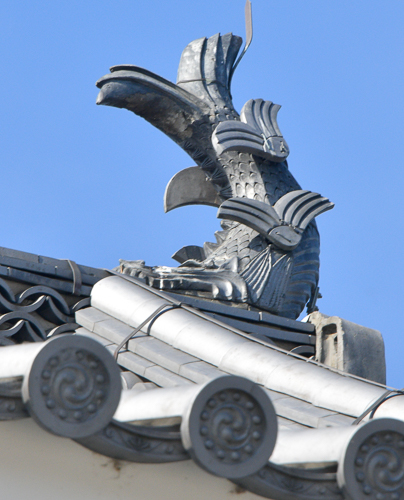
This shibi is Shachi or Shachihoko or “Killer Whale.” It is an imaginary creature with the head of a tiger and the body of a fish.
They were used throughout Japan as roof ornaments to provide protection against fire.
Shibi is an ornamental roof ornament used on the ridgepole, or oonume , of the tiled roof of a temple or palace. Historically, shibi were very popular in China and during the Japanese Asuka and Hakuhou periods. Their popularity began to wane by the end of the Kamakura period (1185–1333)


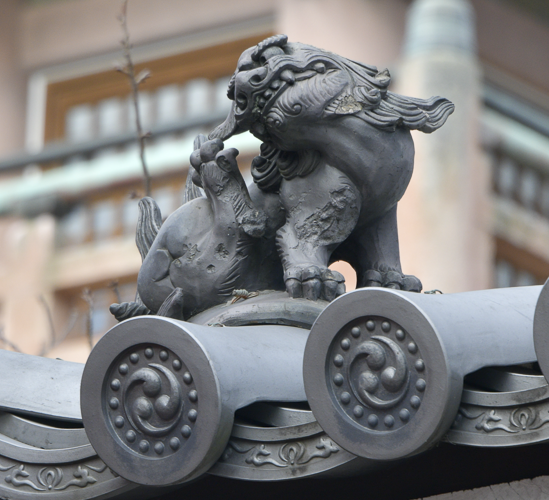
Onigawara
Onigawara literally means ogre or demon(oni) and roof tile(kawara).Because they generally depict a Japanese ogre (oni) or a fearsome beast. Prior to the Heian period, they were usually ornamented with floral designs.

The Pheonix is atop an onigawara.
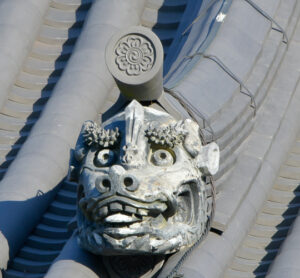
An onigawara in Uji
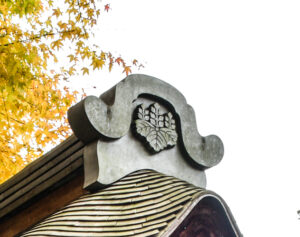
Onigawara are a kind of ornamental roof tile observed at both ends of the roof of typical Japanese architecture. They are installed as a talisman to ward off evil spirits and as decoration. They also play an important role in preventing rainwater from entering the building.
It’s said that kawara, the roof tile itself, was introduced to Japan from Korea in 588, along with Buddhism. Four kawara experts were dispatched and used kawara for the first time in the construction of the Asuka-dera Temple. The oldest onigawara was excavated from the ruins of Horyu-ji Temple in Nara Prefecture, and it has a lotus flower.
Shōki
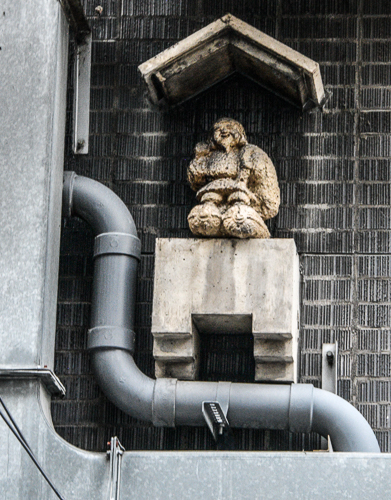
Shōki are Chinese folk gods believed to be stronger than demons. Evidence that the deity reached Japan by at least the late Heian Period (794 to 1185) is from an image of Shōki on a scroll at the Nara National Museum dated to the reign of Emperor Goshirakawa (1127-1192). Shōki’s popularity peaked in Japan during the Edo period when people began to hang images of Shōki outside their houses to ward off evil spirits during the Boys’ Day festival. From what I gather, you really only see them around Kyoto.
The Streets of Japan
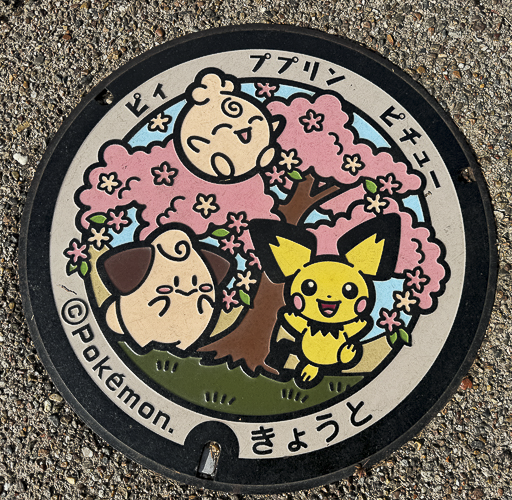
A Poké Lid I found in a park in Kyoto.
Fifteen years ago, my late husband started taking pictures of utility covers, in particular, manhole covers, in Japan after noticing that every city had its own design, and they were gorgeous. Since then, manhole cover spotting has become quite a thing in Japan, with books, games, and trading cards.
Poké Lids (or pokéfuta) are Pokémon-themed (and licensed) manhole covers. The aim has been to encourage tourists to visit and explore lesser-known areas of Japan and discover the Pokémon artwork there. There are over 240 Poké Lids from Kyushu to Hokkaido regions, and each design is unique.
I have quite a few pictures myself, but the Poké Lids were new to me.
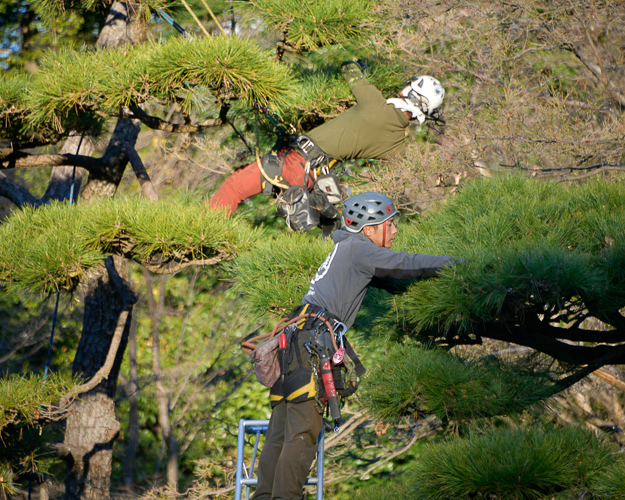
Pine trees are just different in Japan. Japanese-style pine trees are pruned to have a specific appearance. A Japanese-styled pine should have branches shaped to look like half-clouds. They should appear rounded towards the top, whereas the underside is flatter.
There are basically three different pruning methods when it comes to Japanese-style pine tree pruning. They are each reserved for different times of the year to maintain and preserve the style. The first one to note is Momiage pruning. This is what you see being done here. One only uses one’s hands as tools during the Momiage pruning process. Momiage is the method of removing needles – specifically, only the old needles.

Nishikigoi: Japanese Koi Fish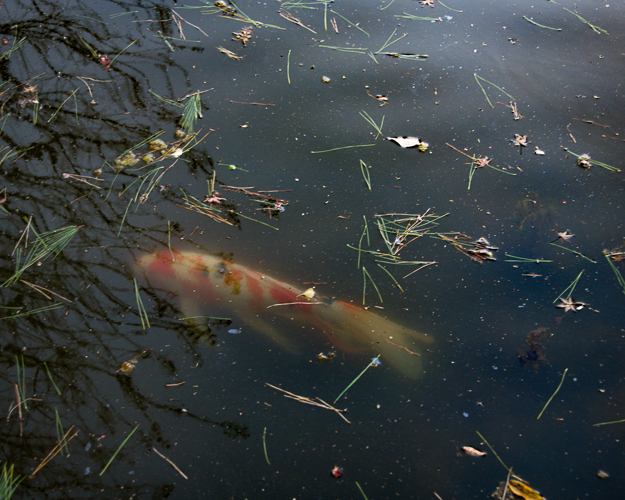
The name “Nishikigoi” (living jewels) goes back 200 years to a village in Japan.
The first Nishikigoi was produced by farmers breeding black carp (or Magoi) as a food source to survive the winter. The result was a vibrantly colored carp.
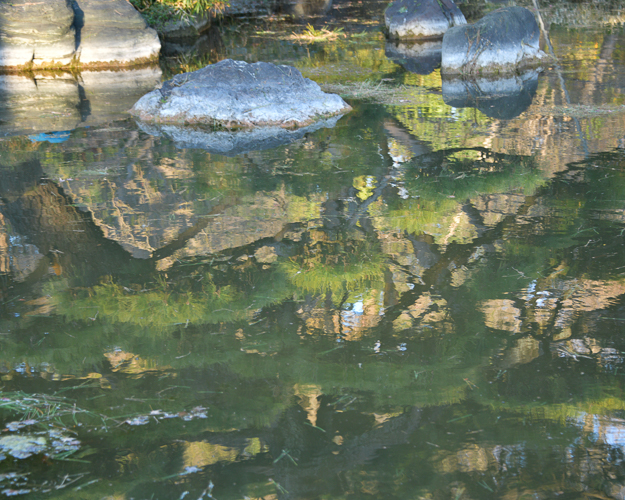
The carp in this picture is in a pond at the Imperial Palace. It is a Hirenaga, and its origin is thanks to Emperor Akihito. In 1962, he visited Indonesia and saw longfin carp. He thought it would be interesting to cross the Indonesian longfin carp with Japanese koi. He suggested this idea to Saitama Prefecture’s Inland Water Fisheries Experiment Station. The station succeeded in developing five Hirenaga varieties. In 1991, 22 Hirenaga koi were released to a pond at the palace. Ironically, they are not very popular in Japan but are very popular in the US, with their own category in Koi competitions.
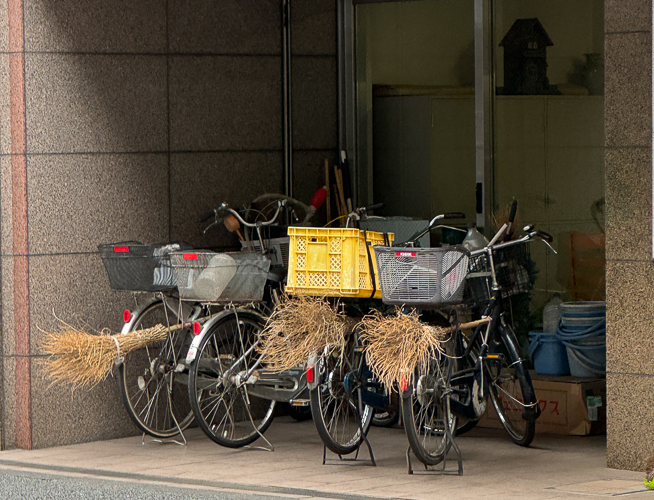
And then there is the quirky, no matter where you travel. I am sure these belong to a very special cleaning crew, but all it brought to mind was a witches travel back up plan.












